Introduction
If you’re even a little bit interested in how you perform as a gamer, your gaming mouse is the most important part of your setup. It’s the tool that you use to aim with, and the difference between a mouse that suits you and one that doesn’t can really make a big difference in your performance. With so many options out there along with tons of marketing terms being thrown around, it can be difficult to find a mouse that fits you, though. We’re here to help. In this article, we’ll break down what matters when choosing the right gaming mouse.
Since shape is by far the most important part of a mouse, we’re doing a deep dive into that in this article. But before that, we’ll cover all the other factors that make (or break) a mouse.
Debunking the ‘just get good’ myth
When people ask about gaming mice online, you’ll often hear an old classic: ‘a good player on a $10 office mouse will always wipe the floor with a bad player using the latest $150+ gear.’ And yeah, that’s true, up to a point. Practice, mechanics, and experience are extremely important. A world-class pro could probably still rack up kills with a trackpad if they had to.
But you’re not playing against pros. You’re playing against people roughly at your own skill level. And in those close, 50/50 matchups, your gear does matter. Your mouse matters.
Additionally, not a single pro uses a $10 office mouse, so the point of those online voices is moot anyway. Every single pro uses gaming mice with flawless sensors, gaming-grade specs, and shapes tailored to their grip and style. If mice didn’t matter, we’d see plenty of pros playing on cheap office mice, but we don’t. The scene is flooded with different shapes, weights, and specs precisely because the mouse is such a personal and performance-critical choice.
In a now infamous YouTube documentary, the coach of a top-tier professional CS2 team blasts one of his players for simply changing his mouse right before a tournament. Would that have happened if mice didn’t make a difference?
So yes, it’s true: skill will always beat gear, when the skill gap is very large. But when the skill gap is small, having a mouse that suits you can absolutely tilt the balance. The right mouse won’t magically make you a pro, but it will make sure your aim is being translated as cleanly, consistently, and comfortably as possible. And that makes all the difference.
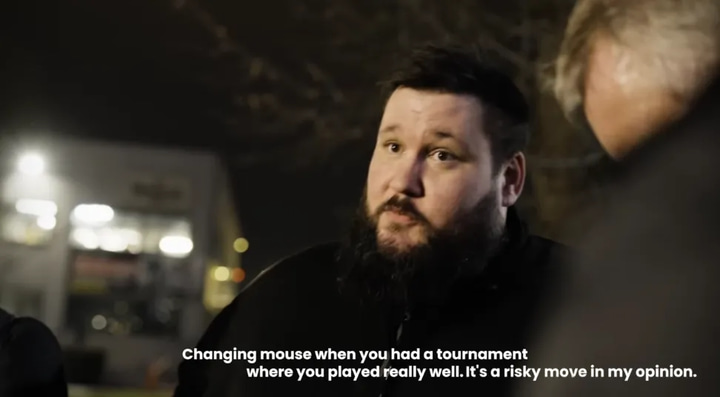 Source: @FalconsEsport on YouTube
Source: @FalconsEsport on YouTube
What makes a gaming mouse good?
If a mouse is going to be used as a gaming device, it needs to pass a couple of tests first. These are things we can objectively test and evaluate. Factors like the sensor implementation, the quality of the shell, the button implementation, and the latency all matter. If a mouse does not do well in terms of raw performance, it’s a no-go from the start.
Once a mouse ticks all the right boxes in terms of performance, it’s time to move on to the most important aspects: shape, size, and all the rest. A mouse can be a technological marvel with no equal, but if it’s so small that it causes your hand to cramp up, it won’t be it for you. Or, if you prefer to play with very light buttons and the mouse you’re eyeing has super stiff buttons, it can similarly be a dealbreaker.
Let’s dive into all of the different aspects of a mouse.
Objective factors
Sensor (implementation)
Pretty much all major peripheral manufacturers use flawless sensors in their mice these days, so the times where you had to check which sensor was inside of a mouse are pretty much over. Still, it’s always a good idea to check out reviews and breakdowns prior to committing to a purchase, since the implementation also matters. A bad implementation can cause the sensor to skip, lag out, or do all sorts of things that negatively impact your aim.
Note that high DPI counts are often used by peripheral companies to promote their mice as if a high DPI equals a better performing player, but this isn’t the case. Less than 3% of our analyzed pros use a DPI higher than 3200.
What’s also good to know is that sensors have been so good for such a long time now that it’s practically impossible to tell the difference between two modern top tier sensors. A top sensor from 4 years ago might be inferior to the latest and greatest sensor that’s released today, but the margins are so small that you won’t even be able to tell the difference in-game.
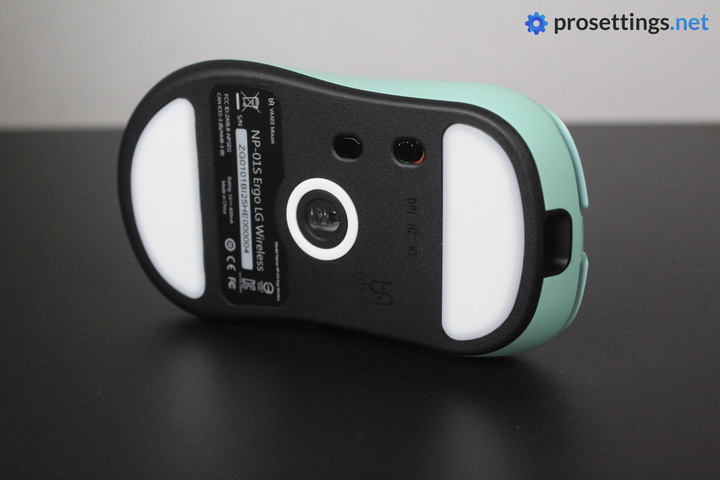
Build quality
A mouse should feel solid and be able to withstand a bit of pressure. There should be no rattling parts, no creaky shell, and no loose scroll wheels that die after a week.
Usually, the build quality of a mouse only gets fully revealed after using it for many months, but reviewers can still test how well-built a mouse is by subjecting it to various tests.
Wireless connection/latency
Wired mice pretty much do not exist anymore in the pro scene. Wireless technology has been perfected many years ago, to the point where you cannot tell the difference between a wired mouse and a wireless one. As a result, wired mice have been going the way of the dodo.
Most companies nowadays get their wireless implementation right, but it’s still important to test. If a mouse has high amounts of latency, for example, it can mess with your tracking and click timing. Similarly, wireless dropouts can completely ruin a round.
Button implementation
Click feel is subjective, but good implementation is not. Main buttons should actuate crisply and consistently. There shouldn’t be too much pre- or post-travel, and the buttons should not move side to side in an egregious way.
The same is true for side buttons. They’re less important than the main buttons, but no one likes a mushy set of buttons.
Scroll wheel
Scroll wheels shouldn’t skip steps, feel mushy, or rattle. Even if the tension or tactility comes down to preference, inconsistency will always ruin the experience.
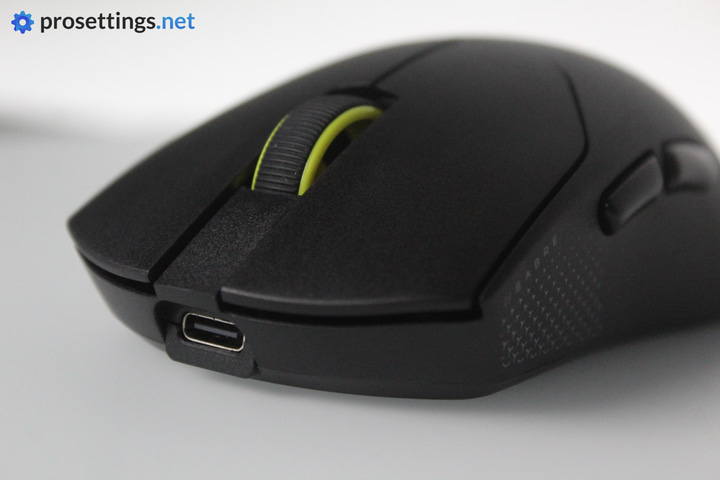
Mouse feet
Often overlooked since they can be easily swapped out, but bad (scratchy) skates can dig into your mousepad and ruin the glide. Good feet are smooth, even, and give you a consistent glide. Note that the gliding speed is subjective: some people like a slick glide, while others want a more controlling experience.
Coating performance
A mouse’s coating should offer plenty of grip in all conditions. It should also feel consistent at all times and, ideally, it shouldn’t become dirty too quickly. These are all things you can break down and evaluate without subjectivity.
Polling rate
The polling rate debate is a divisive one. Simply put: the higher the polling rate, the more often your mouse reports its current position and status to your PC. So a higher polling rate results in a more responsive mouse.
Whether this is something you can actually feel in-game very much depends on your setup (you need a strong PC + a high refresh rate monitor in order to even notice the difference) and how perceptive you are to these things. No matter where you stand on this debate: it’s very clear that the differences are very small. Don’t get yourself an 8000Hz mouse thinking you’re going to outplay all those 1000Hz noobs. That won’t be the case. There are tons of high-performing pros who are still on 1000Hz, for example.
The reason we put this in the objective category is because higher polling rates are very much standard these days, so a mouse that doesn’t offer any higher than 1000Hz is usually a more budget-oriented mouse, and older model, or one made by a company that doesn’t want to invest in the newest technology or sensors.
Switches
For the longest time, gaming mice used mechanical switches underneath their main clicks. These required companies to implement features such as debounce delays in order to prevent accidental double clicks. Optical switches, on the other hand, pretty much eliminate all problems associated with mechanical switches, but they do (generally) feel worse than mechanical switches.
Because optical switches solve many of the problems of mechanical switches, we decided to put this in the objective category. However, we should also note that preference plays a large role here. Some players swear by mechanical switches because they can’t stand the way that opticals feel. So if you see a mouse that you like and it has mechanical switches, don’t let that be a dealbreaker.
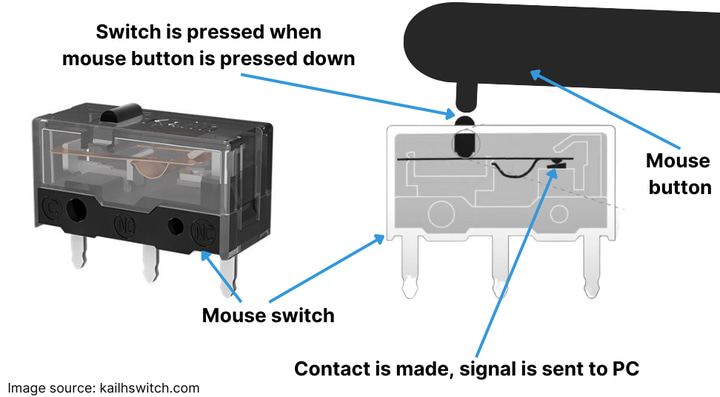
Subjective factors
Shape and Size
This is the most important factor by far. A mouse can have flawless specs, but if it doesn’t fit your hand and grip style, it won’t work for you. You can use sizing guides and recommendations as a starting point, but remember: they’re just guidelines. Some pros with massive hands use tiny mice, and vice versa. Comfort always comes first, and your playing style and hands are unique. So don’t just copy whatever a pro or reviewer is using without giving it a second thought.
If you have absolutely no idea about what you like, you can try to get your hands on a modern gaming mouse in a store or at a friend’s place. Hold it in your hand and try to imagine what you’d change about it. Do you want more palm contact? Does your thumb want to dig into the shell when aiming? You can use these thoughts as a reference point to start figuring out what you’re searching for in a shape.
Since shape is so important, we expand on it further down in the article.
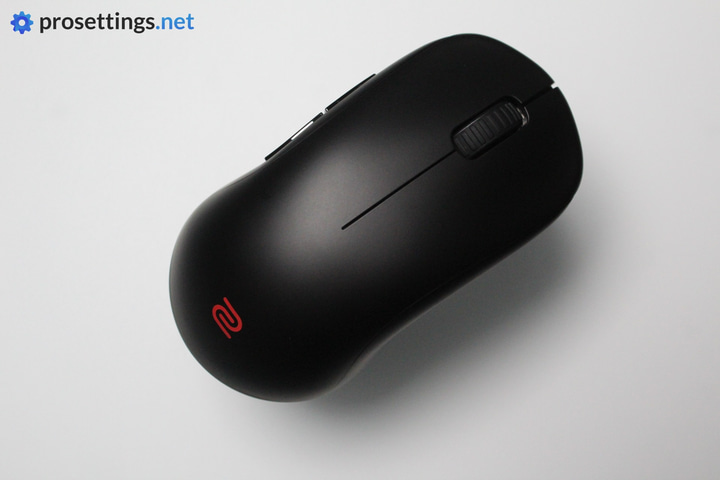
Weight
There’s a ton of debate around this, but if you ask us and the various pros and manufacturers we’ve spoken to over the years, lighter isn’t automatically better. There is obviously an upper limit to weight (you cannot properly and comfortably aim if you have to drag around a 300 gram brick) but that doesn’t mean that you automatically need to use the lightest mouse you can find.
Some people prefer heavier mice, and while most shooter players will tend to gravitate towards lighter products, there’s nothing wrong with using a heavier mouse if that’s what you like to use. So don’t buy into the idea that any mouse that isn’t maniacally trying to be the lightest it can possibly be isn’t worth it.
Extra Features
Some people also like to have extra features on their mouse, such as additional side buttons, a free scrolling wheel, a ‘sniper button,’ and so on. High-performing products with lots of extra features are rather rare, though, as most pro gamers like to stick to the familiar two side button setup.
Looks
Beauty is in the eye of the beholder, and that also rings true for gaming mice. Most of the staff here are of the opinion that looks don’t matter for competitive gaming gear, but for some people they obviously do. And that’s okay. We wouldn’t recommend skipping out on a mouse that looks perfect in every way except for the color or something like that, but whether you want a black mouse with no RGB or a little Las Vegas casino in the palm of your hands is completely up to you.
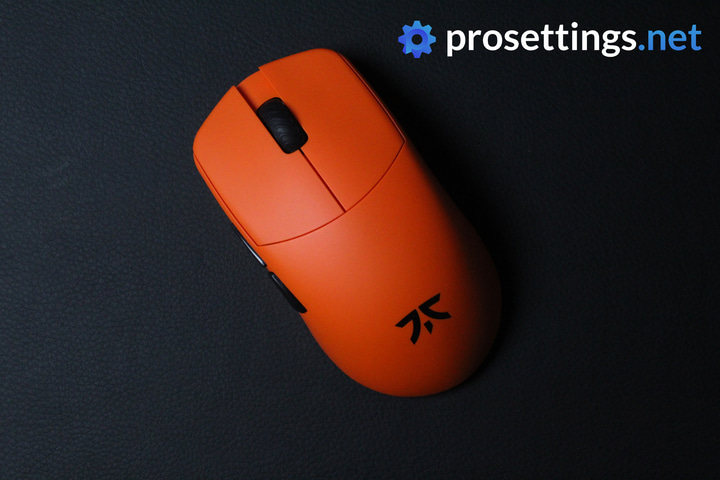
Click Feeling/Tensioning
As we mentioned earlier, the implementation of clicks and buttons is something that can be objectively evaluated. The click feeling, however, is purely subjective. If you mainly play strategic shooters where click timing is of the essence, you might prefer slightly heavier clicks. If you main MOBAs and you’re constantly spamming your buttons, you may gravitate towards lighter ones.
Coating Feeling
A coating should be grippy and allow you to hold the mouse comfortably at all times, but how a coating should feel comes down to subjective feelings. Some people love glossy coatings, while others hate it, for example. How a mouse’s surface feels in your hands can have a pretty big effect on your experience as a whole, so it’s important that the coating suits your preferences.
On grip, shape, and size

On mouse grip type
It is often said that we can divide users into three different distinct categories when it comes to grip type but our research shows us that this is an oversimplification. There are a number of problems with using this simplified way of approaching something as personal and unique as a grip style, one of them being that it’s impossible to have just three categories.
In the image above, we’ve listed the way many sources traditionally differentiate the different types of grip (the blue parts indicate the areas of your hand that touch the mouse) but this is, as mentioned, very simplified. Most people don’t seem to follow these templates and everyone has a unique grip. It’s a good idea to use these graphics as a guideline to determine what your grip most closely resembles so that you can better categorize the way you hold a mouse (this can be handy when checking reviews and so on) but there’s no need to follow any of this to the letter. Hold your mouse the way you feel comfortable.
Best mouse grip and size
A lot of people seem to be pinned on the idea that certain hand sizes have to use mice that fall in a certain size category, or that one grip type is better than another. These things are all, to put it bluntly, bogus. There are professionals out there with huge hands who ‘should’ be using the largest mice they can find but end up competing with a small version of a certain mouse, for example. Palm grip is often touted as the ‘worst’ grip, yet some of the best aimers in the world use it. In the end it’s simple: it boils down to what you prefer.
That being said: don’t feel restricted by that either. It’s perfectly possible that your preferences and grip evolve over time, so if you see a review for a mouse that sounds like it’s maybe a bit too small for you but you love absolutely everything else that you read about it you shouldn’t be afraid to try it out if your budget allows for it. You never really know if it could become your favorite mouse.
Ambidextrous vs ergonomic
Simply speaking, gaming mice are divided into two major different shapes, namely ergonomic and ambidextrous. When talking about gaming mice, an ergonomic (‘ergo’) mouse simply means that it’s shaped and contoured in a certain way to fit the natural flow of one certain hand (usually the right one) whereas an ambidextrous (‘ambi’) mouse has a neutral shape that feels the same whether you’re holding it with your right hand or your left hand. Some ambidextrous mice have side buttons on both sides but that’s not necessary for a mouse to be called an ambidextrous mouse, as we’re really only talking about shape here.
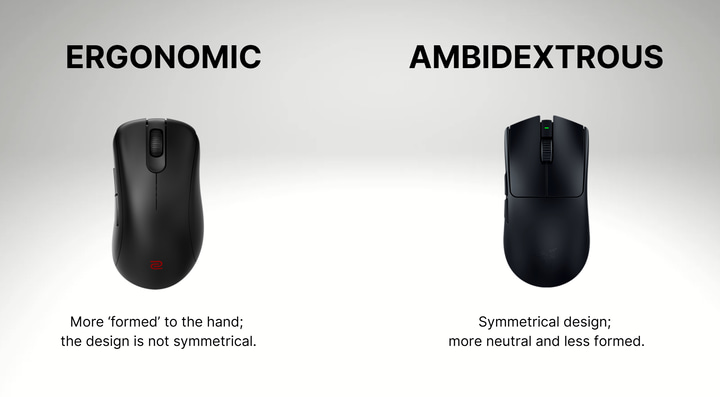
Finding the right shape
As we’ve established, there is no objective ‘best shape for gaming’. But certain shape designs do offer different aiming sensations. In the next section, we’ll give some pointers on mouse shapes. Do note that we are painting with broad strokes here, however.
Size and nimbleness
Smaller mice generally feel more nimble because they require less surface area contact with your hand. With less of your palm anchored to the shell, it’s easier to move the mouse across the pad with your fingers and make quick adjustments. Larger mice, on the other hand, provide more surface support and stability, which can help with steadier tracking or angle-holding.
Generally speaking, gamers who play tracking-heavy games with lots of flicking and moving might gravitate towards smaller mice, while gamers who main games where crosshair placement and aiming stability is more important could prefer larger mice.
Side design
The sides of a mouse matter more than most people think. Some mice have straight, neutral sides, while others slope inward or curve somewhat. Subtle curves like thumb grooves or pinky flares can ‘lock in’ your grip and prevent slippage, but they can also feel restrictive if you like to adjust your grip on the fly.
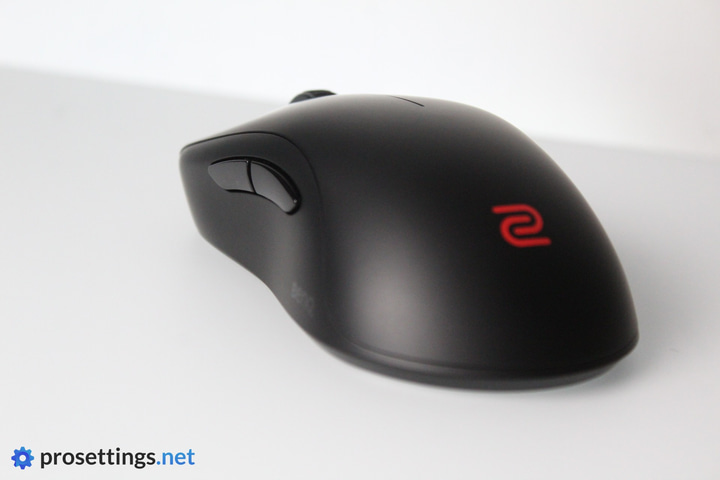
Hump and Back Support
The hump (the ‘top’ of the mouse shell) and its location changes how much palm contact you get. A centered hump feels quite neutral and supports many grip styles, while a back-focused hump fills the palm a lot more, leading to a more locked-in feeling. A flatter shell up top (with little to no hump) gives a lot more freedom, but can feel ’empty’ if you prefer a mouse that fills your hand.
Button Height and Feel
The closer your fingers are to the pad, the more ‘connected’ you can feel, as your hand gets put into a position that resembles writing with a pen a bit more, which can improve precision. Higher button heights can be more comfortable for longer sessions and place less emphasis on your fingers and more emphasis on your wrist and hand when aiming.
Shell tilt
Some mice are perfectly flat when viewed from the front/back, while others have a tilt built into the top shell. A slight tilt can make the mouse feel more relaxed and natural to hold, which may make a mouse feel more secure in your hand. A flat or neutral top, on the other hand, can feel more ‘open’ and versatile.
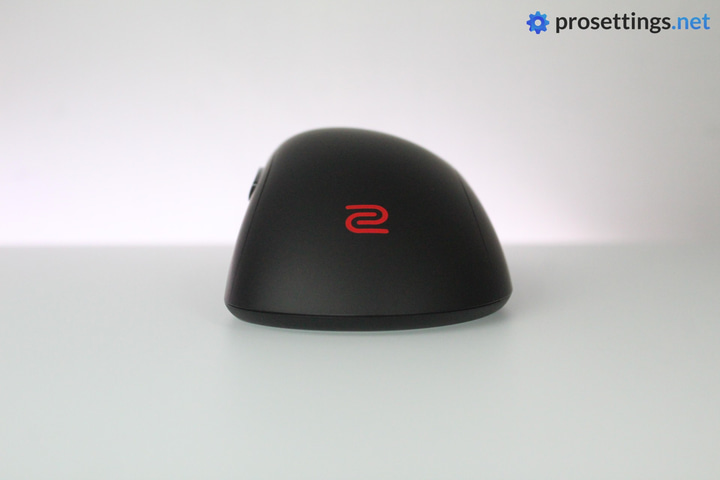
Grip width
Narrower mice encourage a tighter pinch grip, making quick, precise adjustments using your fingers easier, though they can feel less stable for big swipes. Wider mice spread your hand out more, offering a steadier and more natural gripping sensation.
Conclusion
Every person is unique so it’s very important that you figure out what works for you. No person can accurately predict whether or not a mouse is going to be right for you based on just grip type and hand size. Of course there are general guidelines (such as, for example, recommending a mouse with a higher backside for palm grippers, or steering fingertip grippers towards smaller ambidextrous mice) but in the end everyone is different so don’t be afraid to experiment a little.
Most importantly, don’t let anyone tell you things like ‘mouse X is the best’ or that you should use a certain grip type because it’s ‘better.’ A mouse can have all the best specs in the world, but if the shape doesn’t sit right with you it’s not going to be good for you.
With all of these marketing terms and crazy promises going around it can be hard to see the forest for the trees, especially if you’re new to the world of gaming mice, but hopefully this article has helped you see things a bit more clearly.
Thanks for reading!